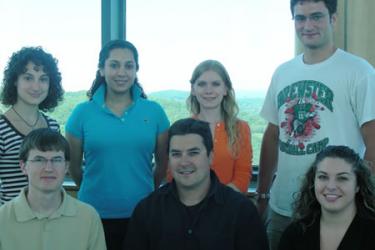
Project Description:
Sensory neurons often process information over a large range of a given stimulus parameter. For example, the auditory system can function over a range of sound intensities corresponding to a 1012 fold increase in sound pressure from detection threshold. Specializations at several levels of the auditory system are in place to maintain low detection sensitivity but at the same time, prevent saturation (overload) of the system. We are exploring one such mechanism at a synaptic site that requires very precisely timed synaptic input to achieve its computational function. Specifically, we propose that a particular receptor system (the GABAB receptor) locally controls the strength of excitatory and inhibitory inputs to this neuron type. Further, we expect that local control of synaptic strength maintains the circuit in an optimal operating range. During last summer’s program we successfully developed the instrumentation necessary to perform these experiments and collected our baseline data. The next phase of the project will be devoted to testing our central hypotheses. Our approach combines computational modeling with advanced experimental techniques to determine the impact of these receptors on circuit function.
Project Year:
2008
Team Leaders:
R. Michael Burger, Ph.D.
Linghai Zhang, Ph.D.
Ping-Shi Wu, Ph.D.
Graduate Students:
Matthew Fischl
Melissa Stoner
Undergraduate Students:
Julie Heidt
Matthew Parks
Harjot Thind
Danielle Trause





